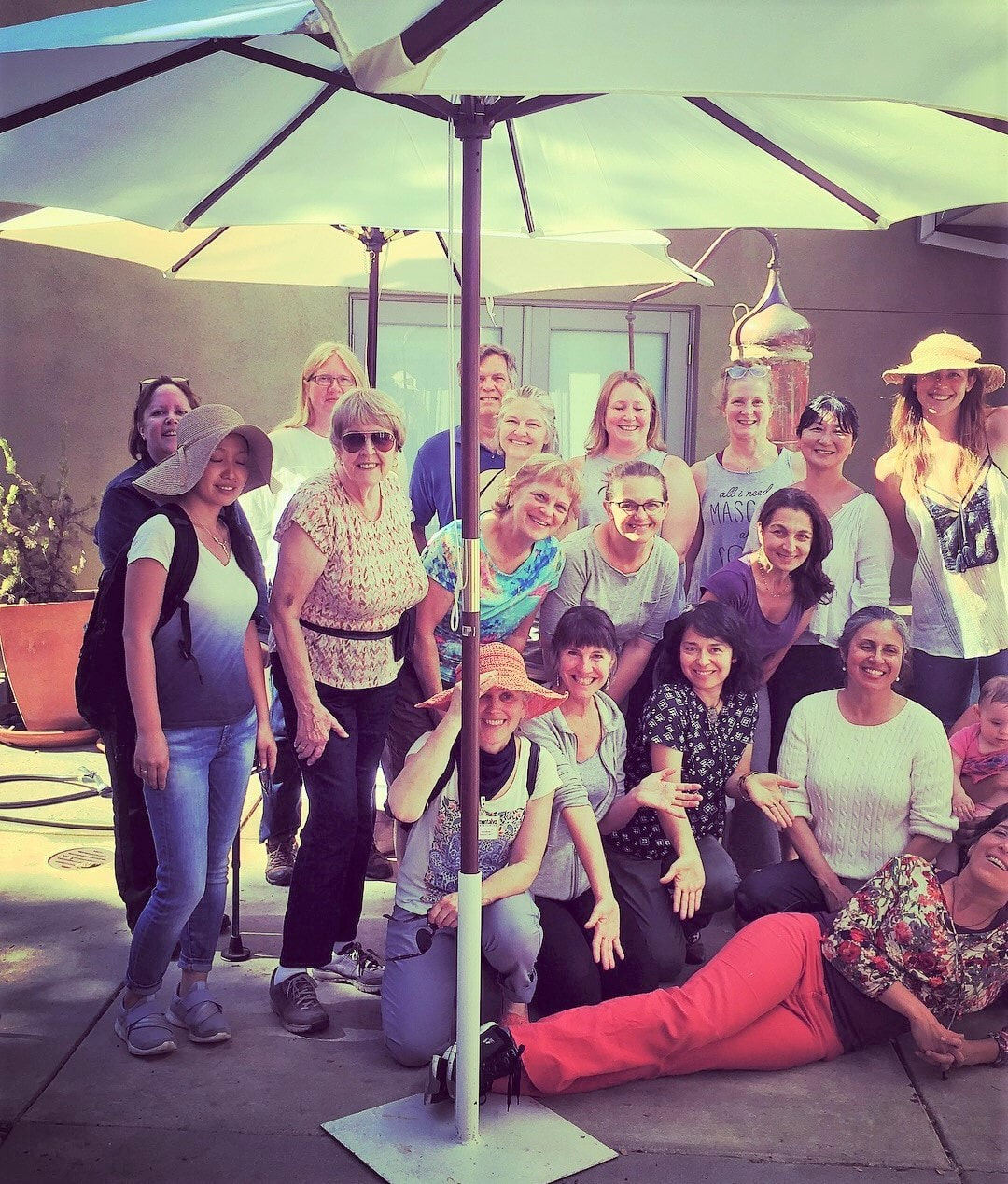By Andrea Blum ( @myamericanpantry ), Montalvo Culinary Artist
Students from the Crafting Hydrosols & Essential Oils class
Photo: Andrea Blum
The redwood is my absolute favorite tree in so many ways. It’s a powerful symbol and a living, breathing organism that defines a place. Oh California, how I appreciate you. It’s the tallest tree in the world that only grows in the coastal foggy climate of the west. It’s not only a pleasure to gaze at in all its wonder, but it also has a scent that brightens the dark forest. Last week, I invited Alice Duvernell, an ethnobotanist and maker of healing skin products, to the Lucas Artists Residency to teach a class on how to distill this incredible tree with steam—and how to do it sustainably. Yes, we gathered the young shoots (after asking the tree’s permission and thanking it) from the Montalvo grounds just behind my studio. We packed the tender branches into a copper still, filled it with water, fired it up and spent the day watching the drip-drip of the distilled water and oil drop into the beaker. As the day passed, the students learned all aspects of distilling plants. I used many of these plant distillations as complements to food.
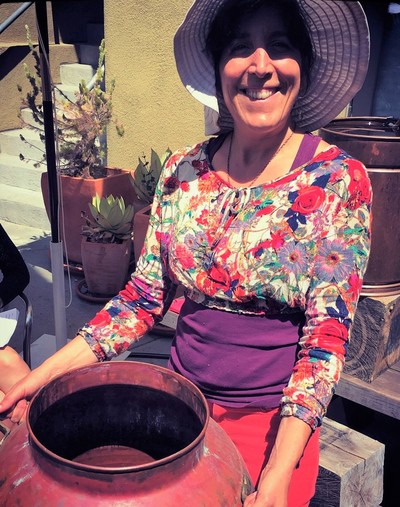

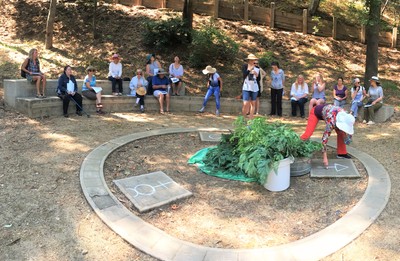
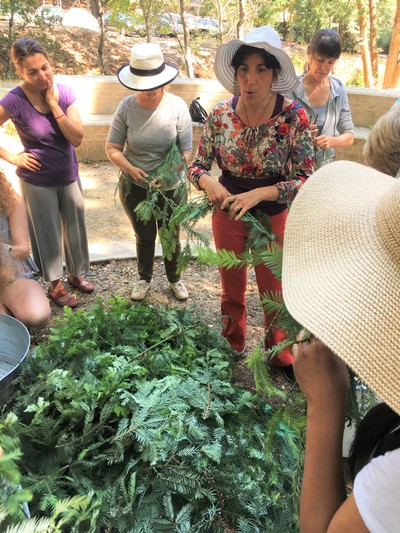
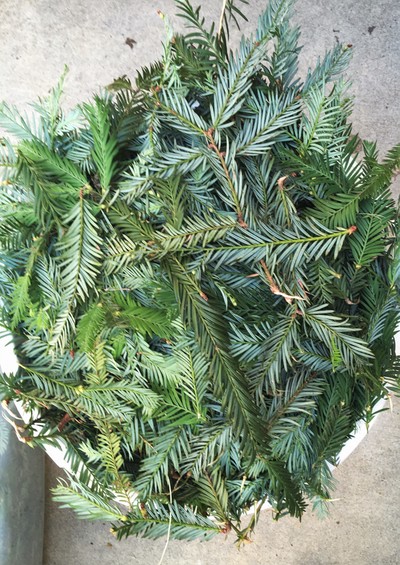
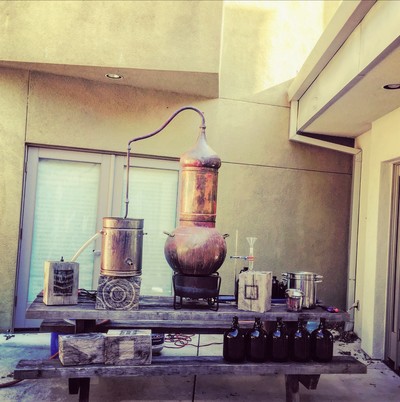
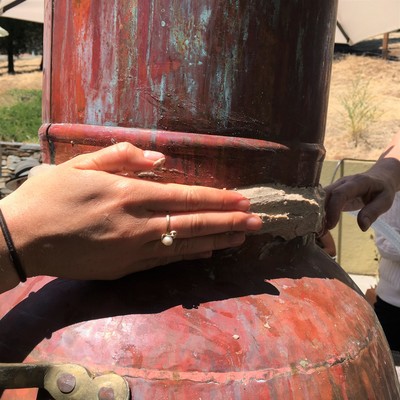
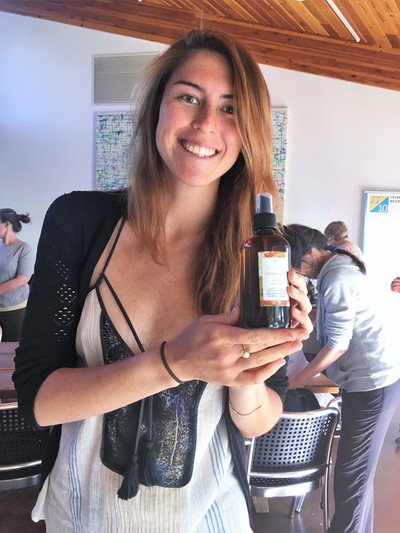
Ever spray a cinnamon hydrosol (the watery by-product of an essential oil) on a cherry dipped in chocolate? Or made a vinaigrette from distilled cocoa with walnut oil for a salad? Never in my culinary life had I done this, but I had the unique chance this weekend to play with the products that Alice created, bringing the creative flavor process to a whole new level in my food.
I made a cheese board with hard and fresh cheeses to play with the herb-enhanced honeys that Alice makes. These honeys were infused with herbs extracted from a CO2 extractor, a machine used by French parfumeurs to extract the complete and clean scent of a plant with carbon dioxide instead of steam (the distilling technique we used for the redwoods). The flavors were powerful and satisfying, making the group smile with pleasure. The day was so fun that we decided to plan a class for the fall on botanical extracts for healing. Extracting the scent of a redwood was inspiring; the smell is amazing. It’s more floral than I imagined, clean with some pine notes, as you can imagine. The day produced a few gallons of the hydrosols and less than an ounce of essential oil. Huge amounts of material are needed to get the potent oils. But the water by-product, the hydrosol, is the oil’s subtle counterpart. Alice packed these into bottles and sent us home with them. What a gift!
Thank you to all the students who attended and to Alice for sharing her deep knowledge of plants. And thank you to the redwoods for surviving though the milling at the turn of the century, and the changing climate that continues to challenge them now.
Click the videos below to get a glimpse into the process of distillment.
I made a cheese board with hard and fresh cheeses to play with the herb-enhanced honeys that Alice makes. These honeys were infused with herbs extracted from a CO2 extractor, a machine used by French parfumeurs to extract the complete and clean scent of a plant with carbon dioxide instead of steam (the distilling technique we used for the redwoods). The flavors were powerful and satisfying, making the group smile with pleasure. The day was so fun that we decided to plan a class for the fall on botanical extracts for healing. Extracting the scent of a redwood was inspiring; the smell is amazing. It’s more floral than I imagined, clean with some pine notes, as you can imagine. The day produced a few gallons of the hydrosols and less than an ounce of essential oil. Huge amounts of material are needed to get the potent oils. But the water by-product, the hydrosol, is the oil’s subtle counterpart. Alice packed these into bottles and sent us home with them. What a gift!
Thank you to all the students who attended and to Alice for sharing her deep knowledge of plants. And thank you to the redwoods for surviving though the milling at the turn of the century, and the changing climate that continues to challenge them now.
Click the videos below to get a glimpse into the process of distillment.


